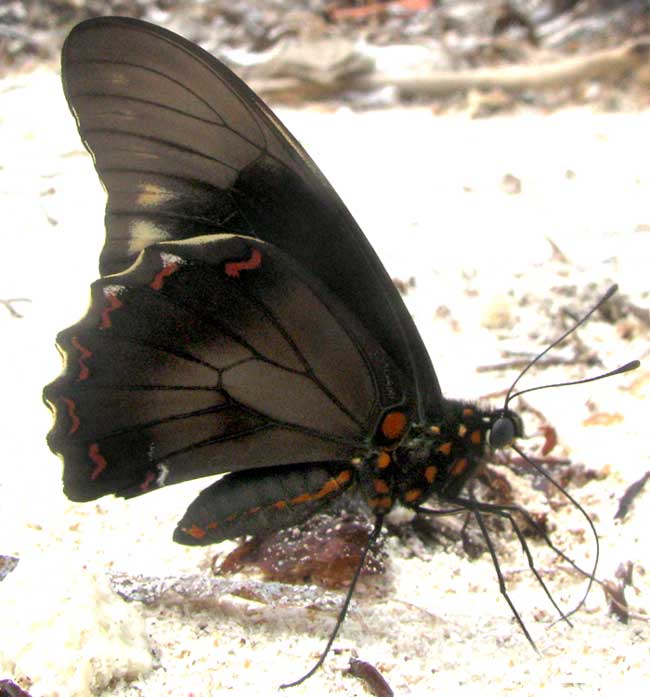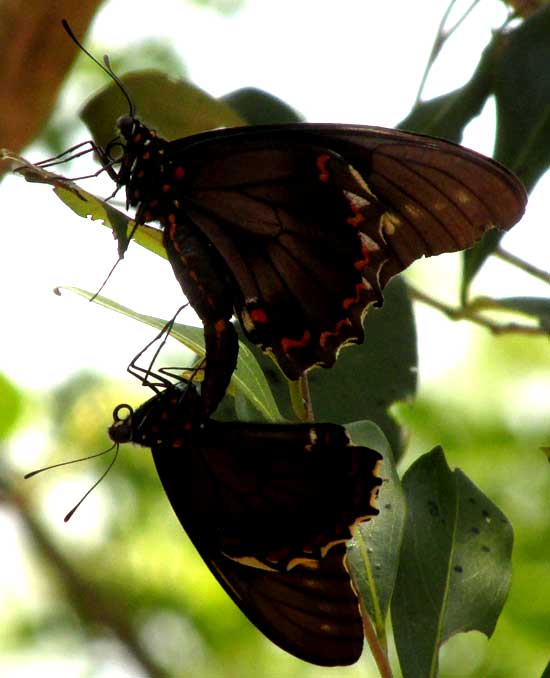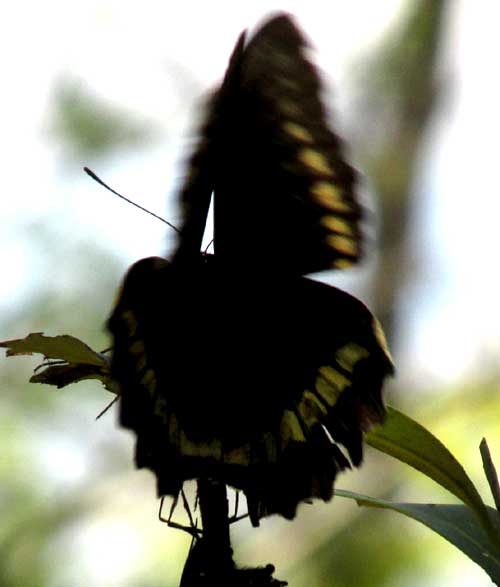Excerpts from Jim Conrad's
Naturalist Newsletter

from the October 23, 2011Newsletter issued from Mayan Beach Garden Inn 20 kms north of Mahahual; Caribbean coastal beach and mangroves, ~N18.89°, ~W87.64°, Quintana Roo state, MÉXICO
POLYDAMAS
Above you see a Polydamas Swallowtail, BATTUS POLYDAMAS, a swallowtail without a tail like a swallow's. Volunteer identifier Bea in Ontario figured it out. I've been trying to photograph this species for the last six months but this is one of those butterflies that keeps moving. Then Wednesday this one turned up with his proboscis probing sand just a couple of feet from the water, maybe sopping up salt.
Polydamas Swallowtails are widely distributed from southern Texas and Florida south to Argentina, plus sometimes they stray outside their usual distribution area. In the US they've been seen as far north as Kentucky and Missouri.
Polydamas caterpillars are listed as eating leaves of pipevines, which are poisonous vines in the genus Aristolochia. Butterflies whose caterpillars eat pipevines are thought to be bitter to potential predators, and poisonous themselves. I've not seen pipevines growing here. However, adult Polydamases take nectar from lantanas, and we've seen that here lots of lantanas (the "Wild Sages") are flowering right now.
By the way, that nice name Polydamas means "trojan warrior." The name originated as a Greek name given to boys.
from the May 3, 2018 Newsletter issued from Rancho Regenesis in the woods ±4kms west of Ek Balam Ruins; elevation ~40m (~130 ft), N~20.876°, W~88.170°, central Yucatán, MÉXICO
MATING POLYDAMAS SWALLOWTAILS
One afternoon a couple of mating butterflies landed in a tree right in front on the hut. You can see them below:

They were so darkly silhouetted that I feared being able to get an identification, but when I tried for a second shot, suddenly the female turned away preparing to carry her smaller male to another perch. Below, you can see her at that moment, revealing some markings on her wings' upper sides:

That picture is interesting in that it shows how when the front, or upper, wings are brought together -- from the blurring on one side I'm thinking the wings are on the upswing -- the back, or rear, pair blouses out. It looks like air is being forced downward and then toward the rear, maybe giving the butterfly some jet propulsion sending it forward. That's just my thinking, though, for I've not read about this elsewhere.
Volunteer identifier Bea in Ontario recognized these as Polydamas Swallowtails, who are fairly dark butterflies even when there's plenty of light, as seen at the top of this page.
Polydamas Swallowtail caterpillars feed on pipevine leaves, genus Aristolochia, whih is fairly common here. The vines are issuing new leaves now on which caterpillars can feed, and on which the newly impregnated female in our pictures can lay her eggs.